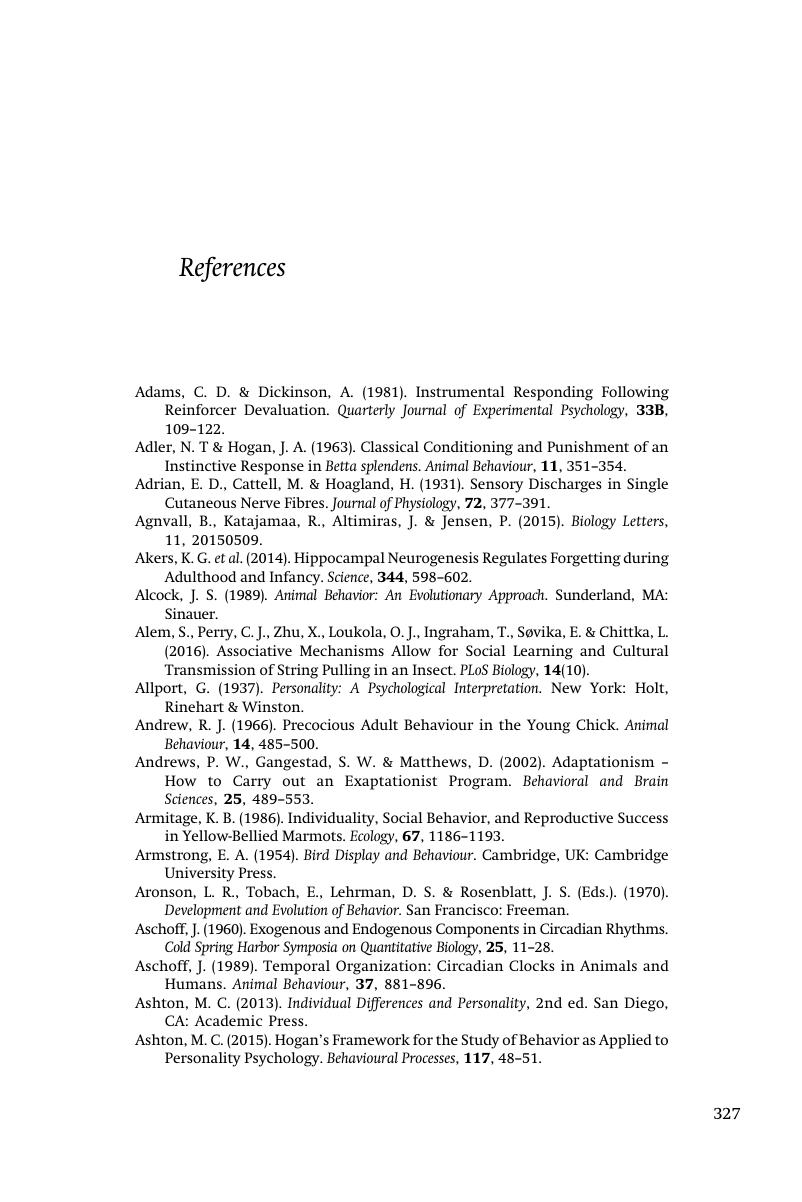Book contents
- The Study of Behavior
- The Study of Behavior
- Copyright page
- Contents
- Preface
- 1 The Framework
- 2 Structure of Behavior
- 3 Motivation
- 4 Motivational Consequences of Behavior
- 5 Ontogeny of Structure
- 6 Ontogeny of Structure
- 7 Causes and Consequences of Development
- 8 Phylogeny of Structure
- 9 Phylogenetic Consequences
- 10 Phylogenetic Consequences
- Afterword
- References
- Name Index
- Subject Index
- References
References
Published online by Cambridge University Press: 26 October 2017
- The Study of Behavior
- The Study of Behavior
- Copyright page
- Contents
- Preface
- 1 The Framework
- 2 Structure of Behavior
- 3 Motivation
- 4 Motivational Consequences of Behavior
- 5 Ontogeny of Structure
- 6 Ontogeny of Structure
- 7 Causes and Consequences of Development
- 8 Phylogeny of Structure
- 9 Phylogenetic Consequences
- 10 Phylogenetic Consequences
- Afterword
- References
- Name Index
- Subject Index
- References
Summary

- Type
- Chapter
- Information
- The Study of BehaviorOrganization, Methods, and Principles, pp. 327 - 362Publisher: Cambridge University PressPrint publication year: 2017

